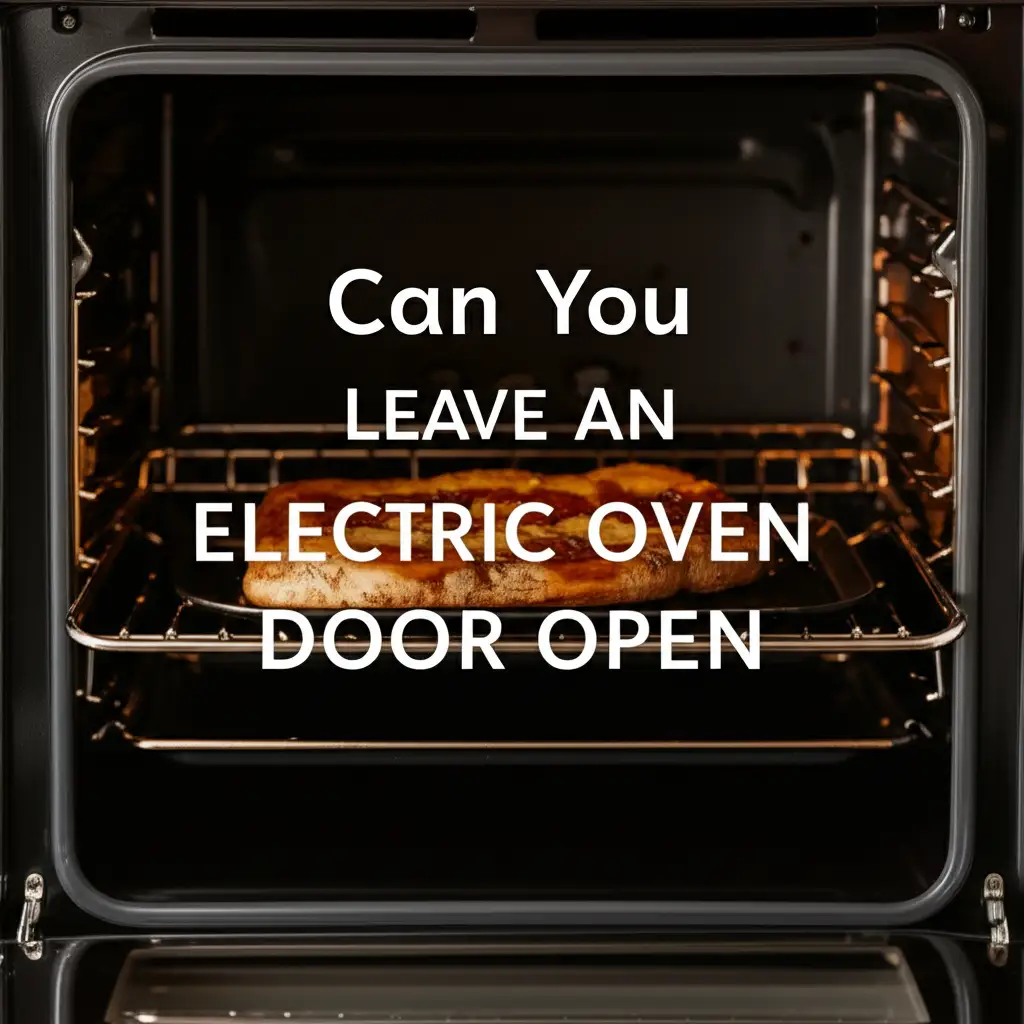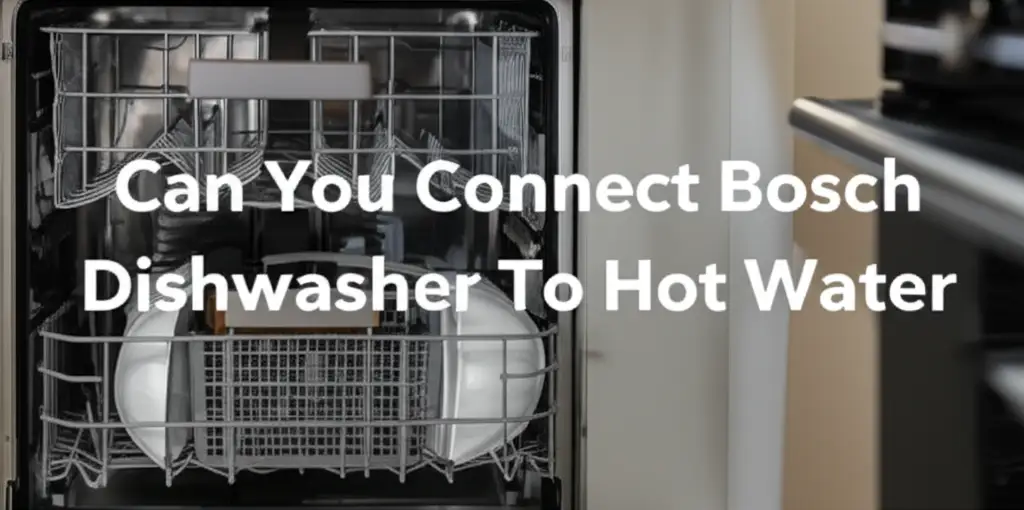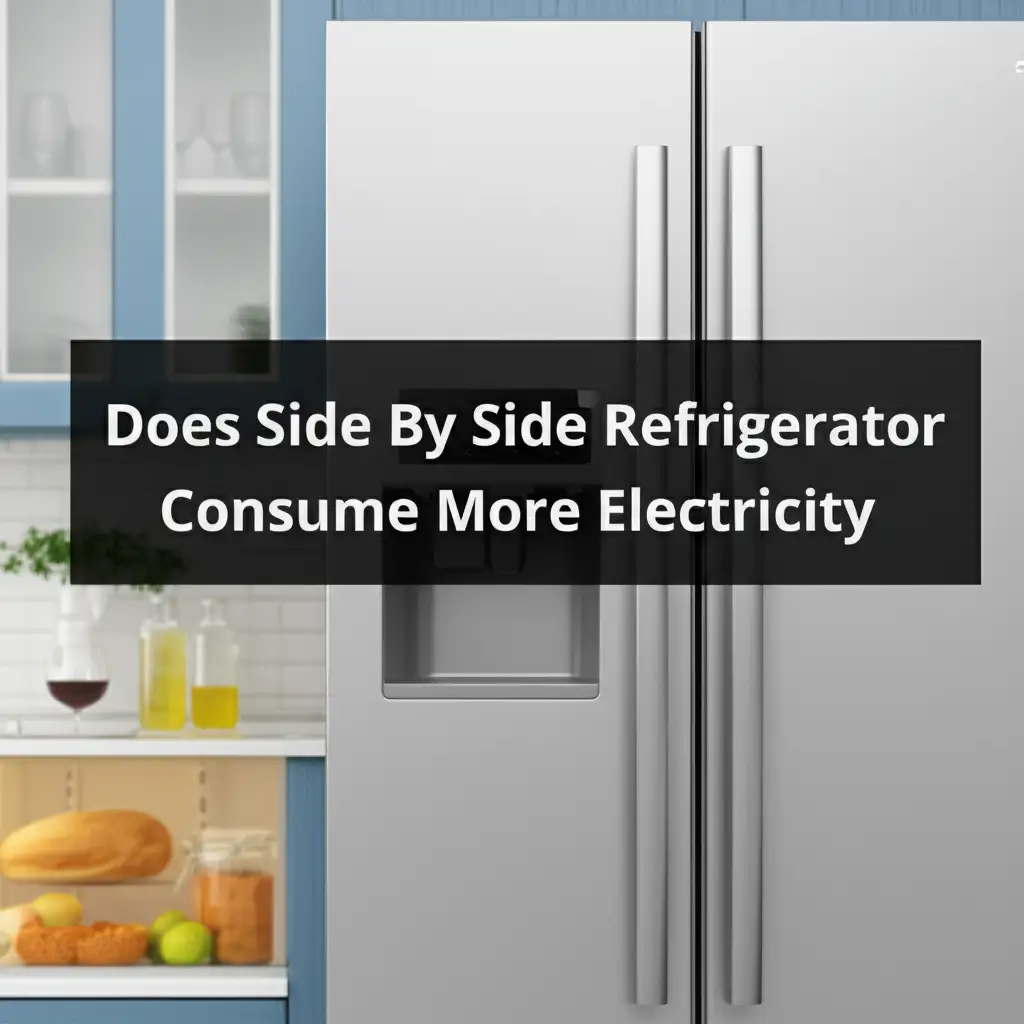· Todd Martin · Home Appliances · 13 min read
Can You Leave An Electric Oven Door Open

Open Door Electric Oven: Is It Safe?
Many home cooks wonder about oven use. You might think about can you leave an electric oven door open for various reasons. Perhaps you want to cool food faster or even use it for heat. However, keeping your electric oven door open carries significant risks. This practice can harm your family, increase energy costs, and damage the appliance itself.
This article explores the dangers of leaving an oven door open. We discuss safety hazards like burns and fire risks. We also cover energy waste and potential damage to your electric oven. Understanding these points helps you make safe choices in your kitchen. We will provide clear answers and practical tips for responsible oven use.
Takeaway:
- Do not leave your electric oven door open for safety reasons.
- Leaving the door open wastes energy and increases utility bills.
- It can damage your appliance and nearby kitchen elements.
- Always cool an oven safely with the door closed after use.
Leaving an electric oven door open is generally not recommended. It poses significant risks to safety, energy efficiency, and appliance longevity. This practice can lead to burns, fire hazards, and increased utility costs. It can also damage the oven’s components over time.
The Immediate Dangers of Leaving an Oven Door Open
Leaving your electric oven door open creates immediate safety hazards. The inside of an oven gets very hot during use. Temperatures often exceed 350°F. When the door stays open, this intense heat escapes into your kitchen.
This escaping heat can quickly burn skin on contact. Small children and pets are especially vulnerable. They may not understand the danger and could accidentally touch hot surfaces. This includes the oven door itself, which remains hot, and the air around it. Hot air can cause severe burns to airways if inhaled directly.
Moreover, the escaping heat raises the ambient temperature in your kitchen. This can make the room uncomfortable and potentially dangerous for anyone nearby. Items near the oven can also overheat. This increases the risk of igniting flammable materials. Even seemingly safe items like dish towels or plastic utensils can catch fire.
Ovens are designed to contain heat. When the door is open, this design purpose is lost. The concentrated heat spreads uncontrollably. This creates an environment prone to accidents. Prioritizing safety means always keeping the oven door closed.
Energy Waste and Efficiency Loss
Leaving an electric oven door open is a significant waste of energy. Your oven works hard to reach and maintain its set temperature. When the door is open, hot air escapes constantly. This forces the oven’s heating elements to work harder. They must run more often to replace the lost heat.
This continuous effort uses much more electricity. Your utility bills will reflect this increased power consumption. Over time, these extra costs can add up significantly. An oven is one of the most energy-intensive appliances in your home. Using it inefficiently impacts your budget directly.
The concept is simple. An oven is like an insulated box. Its purpose is to trap heat inside. When you open the door, you break this insulation. This allows thermal energy to dissipate into the surrounding environment. It is similar to leaving your refrigerator door open; the appliance struggles to maintain its internal temperature, consuming more power.
Efficiency is key for household appliances. Keeping the oven door closed ensures the heat stays where it belongs. This allows your oven to operate as designed. It helps you save money and reduces your energy footprint. Always aim for efficient use to protect your wallet and the environment.
Appliance Longevity and Damage Risks
Leaving your electric oven door open can harm the appliance itself. Ovens are built to operate within a specific temperature range. This heat should stay contained inside the oven cavity. When the door is left open, excessive heat escapes. This heat can affect components not designed for such high temperatures.
The electronic controls and display panels are often located above the oven door. They are sensitive to heat. Prolonged exposure to extreme heat can degrade these parts. This might lead to malfunctions or complete failure. You could face expensive repairs or even need a full oven replacement.
Additionally, the counter-tops, cabinets, and flooring near the oven can suffer damage. Wood cabinets might warp or crack from the constant heat. Laminate flooring could buckle or discolor. Even granite or stone counters can develop stress cracks over time due to thermal expansion. These damages are not typically covered by appliance warranties.
Repeatedly using the oven with the door open shortens its lifespan. The heating elements themselves work harder. This excessive strain can cause them to burn out sooner. Using your oven correctly preserves its condition. It also helps you avoid unnecessary expenses.
Why Ovens Have Closed Doors: Design and Function
Electric ovens have doors for very specific reasons. The door’s primary function is to seal the cooking chamber. This traps heat inside the oven. It creates a consistent and even temperature for cooking food. Without a closed door, heat escapes, and cooking becomes inefficient.
The design of an oven door is also about safety. It acts as a barrier between you and extreme heat. Modern oven doors often feature multiple layers of glass. This insulation helps keep the outer surface cooler to the touch. This design reduces the risk of burns.
The door also directs heat. It ensures the heat circulates evenly around your food. This consistent airflow promotes proper cooking and browning. An open door disrupts this flow. It leads to uneven cooking and longer cooking times.
Furthermore, some modern ovens have safety features tied to the door. For instance, some ovens automatically turn off their heating elements if the door opens too wide during a self-cleaning cycle. This is a safety measure to prevent excessive heat from escaping. Certain models might even pause their operation when the door is opened during a regular cycle. This design prevents a rush of hot air and ensures optimal performance.
Modern Oven Features and Safety Mechanisms
Modern electric ovens come with advanced features. These features enhance both performance and safety. Many newer models incorporate mechanisms that react when the oven door is opened. This is especially true for ovens with advanced electronic controls.
For example, some ovens are designed to pause the heating cycle. If you open the door, the oven temporarily stops heating. It resumes heating once the door is closed again. This feature aims to maintain consistent internal temperatures. It also prevents too much heat loss. Specific brands like Samsung, GE, and Frigidaire often have such features. You might notice your Samsung oven turn off when I open the door. Similarly, some users report their GE oven turn off when I open the door or their Frigidaire oven turn off when I open the door. These are usually safety or efficiency mechanisms.
These features protect the oven’s components from thermal shock. They also prevent energy waste. By temporarily pausing heating, the oven avoids excessive re-heating once the door closes. This reduces strain on heating elements. It also prevents spikes in power consumption.
Other safety measures include cooling fans. These fans activate when the oven is hot. They help dissipate heat from the control panel. This protects the electronics. Some fans continue to run even after the oven is turned off until it cools down. These integrated systems highlight that ovens are designed for closed-door operation. They are not meant to be left open during cooking.
Specific Scenarios: When it Might Seem Okay (but isn’t)
People often consider leaving the electric oven door open in specific situations. One common scenario is using the oven to heat the kitchen. This practice is strongly discouraged. Ovens are designed for cooking, not for space heating. An oven provides uneven heat. It also poses fire risks. Your electric bill will also skyrocket. If you are wondering, “can I leave my electric oven open for heat”, the answer is a firm no.
Another scenario is trying to cool food quickly. Many people open the oven door immediately after turning it off. They believe this speeds up the cooling process for the food or the oven itself. While it might cool food slightly faster, the risks outweigh this small benefit. The sudden release of heat into the kitchen is dangerous. It also contributes to energy loss. A better method is to remove the food from the oven. Let it cool on a wire rack on the counter.
Some might think opening the door briefly to check food is harmless. This is different from leaving the door open for extended periods. Quick checks are part of normal cooking. However, even brief openings allow heat to escape. This affects cooking consistency and energy efficiency. Always close the door quickly after checking.
Avoid using your oven in ways it was not intended. Stick to its primary function: cooking with the door closed. This ensures safety, saves energy, and protects your appliance. Alternative solutions exist for heating your home or cooling food.
Safe Practices for Oven Use and Cooling
Using your electric oven safely is simple and crucial. Always preheat your oven with the door closed. This allows the oven to reach the correct temperature efficiently. It ensures even cooking from the start. Once the oven is preheated, insert your food quickly. Then close the door immediately.
During cooking, resist the urge to open the door frequently. Each time you open it, heat escapes. This lowers the internal temperature. The oven must then work harder to regain the heat. Use the oven light to check on your food whenever possible. Only open the door when necessary for turning or adding ingredients.
After cooking, turn the oven off. Allow it to cool down naturally with the door closed. The residual heat inside the oven will gradually dissipate. This slow cooling process is gentler on the oven’s internal components. It prevents rapid thermal expansion and contraction. This helps extend the life of your appliance.
Once the oven is completely cool, you can open the door for cleaning or air circulation. If you need to clean it, waiting until it cools is safer. If you are cleaning an electric oven, ensure it is off and cool. Following these steps ensures both safety and efficiency. It also prolongs the lifespan of your valuable kitchen appliance.
Understanding Oven Ventilation and Heat Distribution
Electric ovens are designed with specific ventilation systems. These systems manage heat and moisture during cooking. The goal is to distribute heat evenly within the oven cavity. This helps food cook uniformly. These systems also manage airflow. They prevent the build-up of steam and odors.
When the oven door is closed, internal fans and vents work together. They circulate hot air around the food. This creates a convection effect in many modern ovens. This even heat distribution is vital for proper baking and roasting. An open door disrupts this entire system.
An open oven door allows uncontrolled heat escape. This also lets in cooler room air. This influx of cool air interferes with the intended heat distribution. It creates cold spots inside the oven. This leads to unevenly cooked food. Parts of your meal might be burnt while other parts remain undercooked.
Proper ventilation also helps remove moisture from food. This is important for crisping certain items. If the door is open, moisture escapes too rapidly. Or, it might condense on nearby surfaces. This affects the food’s texture and also potentially causes condensation damage to your kitchen. Ovens are precision machines. Their internal environment must remain stable for optimal results. Keeping the door closed supports this stable environment.
FAQ Section
Q1: Is it safe to leave an electric oven door open for a short time after cooking? It is not recommended to leave your electric oven door open even for a short time after cooking. The escaping heat poses burn risks to people and pets. It also wastes energy. Allow the oven to cool naturally with the door closed. This is the safest and most energy-efficient method.
Q2: Can opening the oven door too often affect my food’s cooking time? Yes, opening the oven door frequently releases heat. Each time you open it, the internal temperature drops. This forces the oven to work harder to regain the set temperature. This process extends the overall cooking time. It can also lead to unevenly cooked food.
Q3: Does leaving the electric oven door open increase my electricity bill? Absolutely. An electric oven uses a significant amount of power. When the door is open, heat escapes constantly. The oven’s heating elements must operate more often to maintain temperature. This continuous effort consumes more electricity, directly increasing your utility bill.
Q4: Can leaving an electric oven door open damage my kitchen cabinets or counter-tops? Yes, prolonged exposure to the intense heat from an open oven door can cause damage. Kitchen cabinets, especially wood, may warp, crack, or discolor. Laminate or even stone counter-tops can also be affected by thermal stress. This damage is often irreversible.
Q5: Are there any specific times when it is okay to leave the electric oven door open? No, there are generally no situations when it is safe or recommended to leave an electric oven door open while it is on. The oven is designed to operate with the door closed. The only exception is for very brief checks during cooking, immediately closing the door afterward.
Q6: Why do some new electric ovens turn off when I open the door? Many modern electric ovens incorporate safety and efficiency features. If the oven detects the door is open for an extended period or during a specific cycle like self-cleaning, it might temporarily pause or shut off its heating elements. This protects components and prevents excessive heat escape.
Conclusion
The question of “Can you leave an electric oven door open” has a clear answer: it is not advisable. We have explored the various reasons behind this advice. The immediate dangers of burns and fire hazards are paramount. Young children and pets are particularly vulnerable to the intense heat. Always prioritize safety in your kitchen.
Beyond safety, the impact on your energy consumption is significant. Leaving the oven door open wastes electricity. This leads to higher utility bills. It also puts undue strain on your appliance, potentially shortening its lifespan. Components like electronic controls and nearby kitchen surfaces can suffer damage from the escaping heat.
Remember that ovens are designed for closed-door operation. This ensures efficient cooking and maintains food quality. Modern ovens even have built-in safety features that react to an open door. By keeping the door closed during operation and cooling, you protect your family, save money, and prolong the life of your valuable appliance. Make responsible oven use a standard practice in your home. Take action today by adopting these safe kitchen habits.





